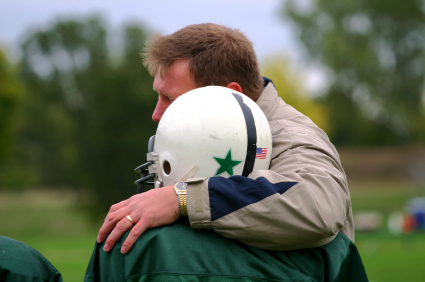An important, and well-established, part of an assessment for concussion on the sports sideline under the most recent concussion guidelines[1,2] is to test an athlete's orientation to time and place by asking the so-called "Maddocks questions." [3] 
The SCAT3 [4] includes the following modified Maddocks questions, which should be preceded with the preface: "I am going to ask you a few questions, please listen carefully and give your best effort."
- At what venue are we today?
- Which half
is it now?
- Who scored last in this match?
- What did you play last week?
- Did your team win the last game?
High specificity/low false positive rate
The Maddocks questions are validated for sideline evaluation only:
- the likelihood that an athlete with concussion will be correctly identified through the use of the Maddocks questions (a measure of its "sensitivity") varies widely (32 to 75%).[3]
- The likelihood that an athlete without a concussion will be correctly classified based on the athlete's score on the Maddocks questions (a measure of its "specificity") is high (an athlete will be correctly classified between 86 and 100% of the time).[3]
- The false-positive rate varies (29-68%),[3] which is probably why the most recent concussion guidelines recommend using sideline screening tools such as the Maddocks questions in combination with other diagnostic tools,[1,2,6] the use of which has been shown in studies to improve diagnostic accuracy).[2,6]
- The false-negative rate (the percentage of athletes who answer all questions correctly but nevertheless are later found to have suffered a concussion) is very low (0-11%), making the Maddocks questions a valuable and reliable screen for concussion on the sports sideline in deciding whether to allow an athlete to return to a game or practice (if they are oriented to time and place, it is unlikely they have sustained a concussion, absent other concussion signs or symptoms)
Different questions for children
Because children under the age of 13 report concussion symptoms and respond to questions differently, the new Child-SCAT3[5] issued as part of the 4th International Consensus Statement on Concussion in Sport[1]calls for a child aged 5 to 12 years to be asked four simple questions to determine orientation to time and place:
- Where are we now?
- Is before or after lunch?
- What did you have last lesson/class?
- What is your teacher's name
Because the Maddocks questions can be asked by anyone, they are valuable on sports sidelines where no health care professional trained in performing a full sideline screening for concussion, such as doctor or certified athletic trainer, is present, as is often the case in contact and collision sports involving younger athletes.
1. McCrory P, et al. Concussion statement on concussion in sport: the 4th International Conference on Concussion in Sport held in Zurich, November 2012. Br J Sports Med 2013;47:250-258.
2. Harmon K, et al. American Medical Society for Sports Medicine position statement: concussion in sport. Br J Sports Med. 2013;47:15-26.
3. Maddocks DL, Dicker GD, Saling MM. The assessment of orientation following concussion in athletes. Clin J Sport Med 1995;5(1):32-35.
4. SCAT3. Br J Sports Med 2013;47:259.
5. Child SCAT3. Br J Sports Med 2013;47:263.
6. Giza C, Kutcher J, Ashwal S, et. al. Summary of evidence-based guideline update: Evaluation and management of concussion in sports: Report of the Guideline Development Subcommittee of the American Academy of Neurology. Neurology 2013 (published online ahead of print March 18, 2013): DOI:10.1212/WNL.ob013e31828d57dd (accessed March 23, 2013)
Posted August 6, 2013








